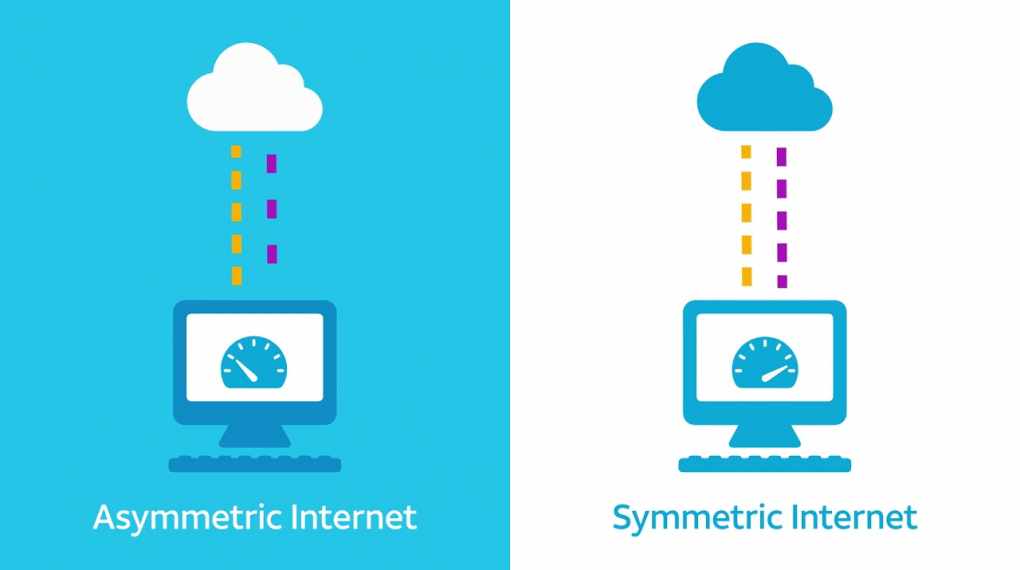Symmetric vs Asymmetric Connection: What’s best for Your Business

It’s likely that you’re not aware, but an internet plan’s advertised speed nearly always refers to the download speed. The upload and download speeds might differ slightly, and an asymmetrical plan is one in which the upload speed is slower than the download speed. The upload and download speeds on a symmetrical plan are both the same.
If you’re thinking about getting new business internet or updating your current connection, you’ve definitely been bombarded with a slew of technical words that only complicate your decision. In this article, we’ll be comparing symmetric and asymmetric connections and what’s best for your business.
Asymmetric Internet Connectivity
An asymmetric internet connection means that the data speed and file transfer rate on your network are different in each direction. One example is traditional home DSL. With this type of connection, you may achieve high download speeds, but upload speeds will be slower.
This option may not be suitable for many businesses, especially when they need to consistently upload large files, share video, do video conferencing, or simply get their daily work done efficiently without worrying about internet connection and speeds. However, asymmetric internet connection products do have the advantage of typically having a lower monthly cost than symmetrical.
Symmetric Internet Connectivity
A symmetric internet connection means that the data speed and file transfer rate are the same in both directions. That is, the connection provides the same download and upload speeds, at the same time. A symmetrical connection enables fast data speeds in both directions, making it ideal for large or small offices where multiple people connect and transfer data simultaneously to the internet.
Compared to asymmetrical connections, symmetrical connections simply perform better, are highly reliable, and allow you to experience a fuller, more robust internet experience. This is especially true when uploading large files, sharing high-definition video presentations, or hosting data for your customers that they need to quickly access. For a minimal price difference, symmetrical connections provide a much better internet experience than asymmetrical connections.
Symmetric vs Asymmetric Speed: What’s best for Your Business
Both connections have their benefits, but what works best for your business will depend on how you use the internet.
Investing in symmetrical speeds will make more sense if you are:
- A mid-size or large company with many employees.
- Heavy users of collaboration tools (including UCaaS and voice).
- Moving (or are already using) applications and services to the cloud (Google Drive, Office 365, Salesforce, etc).
- Part of a team that is distributed across a large geographic area – including multiple sites, locations, & remote workers.
- Productivity bottlenecks are appearing between your tools.
- Scaling up your operations and need to prepare additional capacity for growth.
An asymmetrical connection might fulfill your needs if you are:
- A small company with only a few employees.
- Not relying on the internet for resource-heavy uses – mostly you’re just web-surfing.
- You have one location, or are not part of a larger network.
It depends on your business needs and requirements. If you’re in the cloud, have a lot of VPN users, or demand consistent reliability, a symmetrical connection may be a better option. If you’re a business with limited internet needs (that is, you don’t upload a lot of files, you require a lower-cost internet connection, or don’t mind the occasional latency based on time of day), an asymmetrical-type connection may be more suitable.
As one of the leading Internet Service Providers with industry-best leased lines for dedicated business internet in India, Spectra has all your internet-related queries covered!